#Powhatan confederacy
Text
Another photoshop of Uttamatomakkin I did after seeing many people enjoyed the first one I did! Thank you everyone for sharing such kind words!

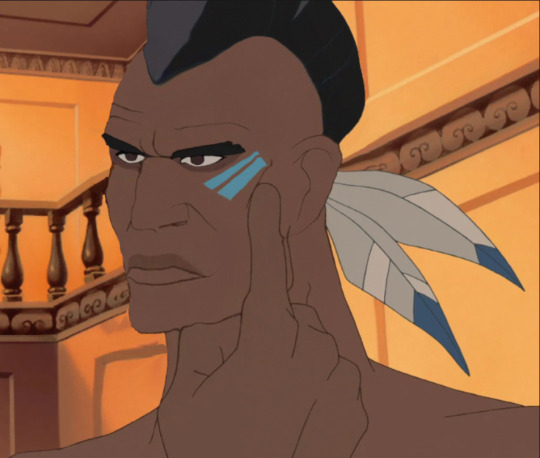

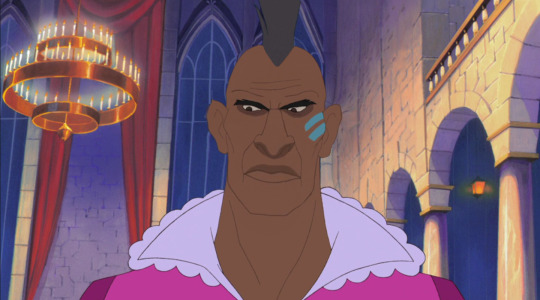
Again, I started doing these to give Uttamatomakkin some dignity back. I am tired of native american men being designed/drawed purposely ugly and insulting. Uttamatomakkin was a real man and he shouldn’t have been made into a joke just because of his appearance/race. So anyways here are my edits.
I hope everyone likes it!
#Was he Mattaponi or Pamunkey?#I believe the Pamunkey claim him?#Uttamatomakkin#Tomocomo#Pocahontas#Matoaka#Photoshop#Edit#pocahontas fix it#Character redesign#racist tw#historical post??#tidewater region virginia#native virginia native#Powhatan confederacy#Powhatan#Pamunkey tribe#Mattaponi#disney pocahontas#amonute
110 notes
·
View notes
Photo

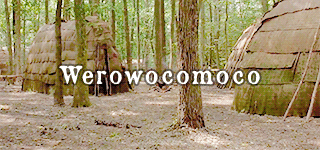

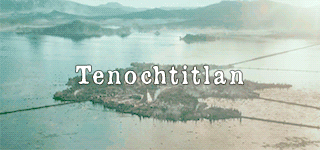



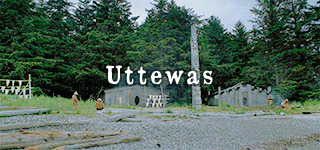
Pre-colonial Native American cities/settlements/meeting sites.
Sivan Vahki: just north of Casa Grande, Arizona, Sivan Vahki or Siwañ Waʼa Ki: was a large farming and trade network site of the Sonoran Desert people starting in the early 13th century.
Werowocomoco: With habitation beginning from the 13th century, Werowocomo was a village that later served as the headquarters of the werowance Wahunsenacah, Paramount Chief of the Powhatan confederacy.
Cahokia: Mississippian culture city dating from circa 1050–1350 CE, containing elaborately planned community, woodhenge, mounds, and burials.
Tenochtitlan: built atop a lake, Tenochtitlan was an Aztec altepetl, and was the largest city in the pre-columbian Americas at its peak. It is considered one of the most impressive cities in North America, and is today known as Mexico city.
Tikal: one of the most powerful ancient kingdoms of the Maya, and dates back as far as the 4th century BC, and may have had a population of up to 90,000.
Omahkoyis: Meeting place and trading and cultural hub for the Blackfoot, and later other tribes as well as settlers. The Blackfoot and their ancestors had inhabited the area as early as 12,000 BC, and would later also be known by other names. Colonizing efforts turned the area into a settlement, known today as the city of Edmonton.
Qusqu: also known as “Cuzco”, the city served as the capital for the Inca Empire from the 13th century up into the 16th century upon colonization. However, evidence shows that The Killke people occupied the region from 900 to 1200 CE, prior to the arrival of the Inca, and had constructed a fortress about 1100 CE.
Uttewas: later known as “Old Masset”, was one of the largest Haida villages on Haida Gwaii, and is home to a number of important cultural artifacts, such as numerous totem poles. Today its land is legally designated as Masset Indian Reserve No. 1.
#historyedit#Native American history#canadian history#american history#mexican history#peruvian history#cahokia#tenochtitlan#tikal#maya#aztec#nahua#history#justin's edits#ndn#native american
934 notes
·
View notes
Photo

Pocahontas
Pocahontas (l. c. 1596-1617 CE, also known as Amonute, Matoaka) was the daughter of Wahunsenacah (l. c. 1547 - c. 1618 CE, also known as Chief Powhatan), leader of the Powhatan Confederacy in the region of modern-day Virginia, United States. She was a member of the Mattaponi-Pamunkey tribe who were members of the confederacy.
Continue reading...
164 notes
·
View notes
Text
Hey folks! As of recent events Natalie is no longer involved with this blog and I've found a new admin, until we get things up and running again the new unofficial task will be to focus on providing the community with Indigenous resources! I've made a masterlist of resources that were lost HERE and of course there are several tasks dedicated to Indigenous people under the cut:
PLEASE NOTE THAT THE OLDER ONES NEED UPDATING!
#053: The Iroquois Confederacy
#054: The Anishinaabe
#055: The Navajo
056: The Iron Confederacy
#057: Great Sioux Nation
#064: Apache
#065: Inuit
#066: The Blackfoot Confederacy
#067: Seminole
#068: Metis
#072: Choctaw
#086: Māori
#094: Tonga
#103: Tahiti
#106: Chickasaw
#117: The Wabanaki Confederacy
#118: Shoshone
#119: Hopi
#120: O'odham
#121: The Powhatan Confederacy
127: Imazighen
#128: Hmong
#156: Indigenous Peoples of Taiwan
#169: Comanche
#170: Lumbee
#171: Cheyenne
#172: Nez Perce
#173: Yaqui
#211: Arapaho
#212: Crow
#213: Yupik
#214: Paiute
#260: Quechua
#261: Dene Peoples
#262: Taino
#263: Lenape
#274: Indigenous Peoples of the Philippines
#291: Mixed Indigenous American and Asian
#292: Mixed Pacific Islander and Asian
#293: Mixed Indigenous American and Black
#300: Alaskan Athabaskan Peoples
#301: Maya Peoples
#302: Interior Salish Peoples
#308: Kamilaroi People
#314: Two-Spirit Faceclaims
#315: Wiradjuri
2 notes
·
View notes
Text
Early historians of abolition attributed the gradual emancipation laws primarily to the outcome of the Civil War. They argued that Cuban and Brazilian slave-owners embraced reform in large part because the abolition of slavery in North America discredited the institution on the world stage. But many considered this explanation inadequate. In particular, social historians objected to an account of abolition in which enslaved people played almost no part. These scholars developed an alternative explanation for gradual emancipation that was rooted in subaltern agency. In their telling, slave-owners surrendered freedom of the womb as a political concession to their slaves in order to defuse mounting revolutionary tensions within Cuban and Brazilian society.
(...)
Even thousands of miles away, slaves learned of the ‘general strike’ that had begun in the Confederacy. In Brazil, this news first reached the northern province of Maranhão in the fall of 1861. The Union warship the Powhatan docked in the capital city of San Luıís that September, in pursuit of a wayward Confederate cruiser. Within days, Brazilian officials detected a ‘movement’ among the province’s slaves. In towns stretching along the region’s waterways, enslaved Afro-Brazilians had begun to ‘declare their freedom’. Slaves insisted that they ‘no longer had to obey their masters’ because ‘a [US] warship was there to liberate them’.
(...)
For the first time, a number of slave-owners in Cuba and Brazil began to look for a way out. In Brazil, Francisco Antonio Brandão Jr led the way. Brandão was the son of a Brazilian cotton planter, who grew up in the province of Maranhão. For four years, his family had watched plantations across the province go up in flames as fugitive slaves took up arms against the Brazilian government. By 1865, he was convinced that if Brazil failed to abolish slavery, ‘the slave will sign his freedom papers with the blood of his oppressors’. That year, he published A escravatura no Brasil, one of the first major works by an elite Brazilian to call for the gradual abolition of slavery across the empire. In it, he pointed to the black freedom struggle unfolding across the Atlantic World as the central reason that slaves in Brazil were ‘inspired to fight’. Was it necessary, he wondered, for Brazil to pass through the same ‘bloody scenes’ as the United States, before the state would take action?
‘A General Insurrection in the Countries with Slaves’: The US Civil War and the Origins of an Atlantic Revolution, 1861–1866. Samantha Payne, Past & Present 257.1 (2022): 248-279.
6 notes
·
View notes
Text
Day 2 (1/2)
We went to the Pamunkey Virginia Indian museum. The Pamunkey was the native nation that lived in tidewater Virginia when English colonists arrived at Jamestown. The Pamunkey was a prominent nation in the Powhatan Confederacy and led by Chief Powhatan, father of Pocahontas, during Jamestown's settling.
The museum was largely a cultural museum, displaying ancient to modern artifacts from the nation. The museum is located on the Pamunkey Indian Reservation.

These are arrays of artifacts from different time periods! All of the artifacts hold cultural and historical importance.

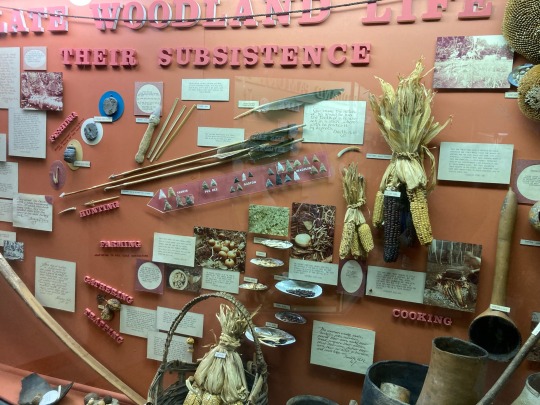
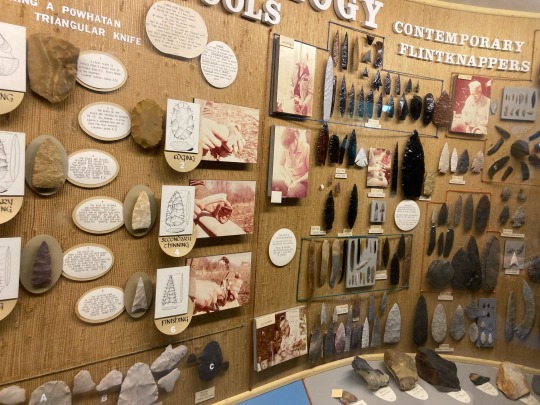
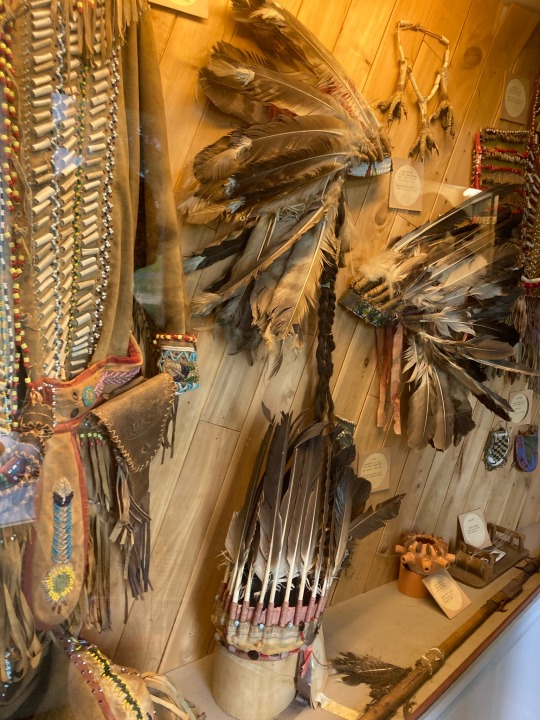
Reproduction of a badge given to Chief Cockoeske as a peace gift after the Treaty of the Third Anglo-Powhatan War that resulted in a victory for the English.

Reproduction of a coat required for indigenous messengers after the third Anglo-Powhatan War.

Three arrows from the Jamestown era.
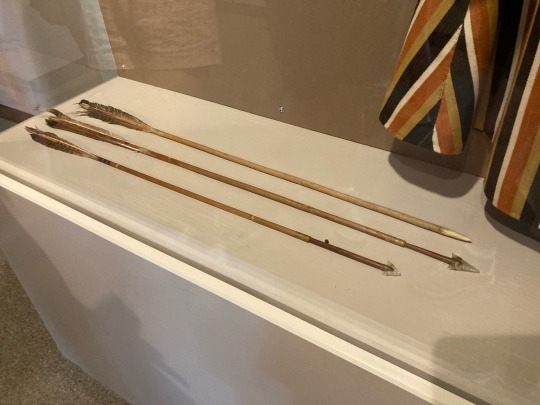
2 notes
·
View notes
Text

youtube
400 Queen Street. Aledo, TX 76008

In Texas, we know it because we see it all the time.
We have activist and self-described historian David Barton, a regular at the Texas Capitol, pitching a rollback of church-state separation.
Barton, based in the small town of Aledo, about 25 minutes west of Fort Worth, pins his efforts on the belief that the United States was consecrated to God in 1607, when the first Protestant pastor touched down in Powhatan’s confederacy (near what would eventually be Virginia Beach), much in the same way that the Old Testament Hebrews were consecrated to God on the plains of ancient Ur.
This special relationship between God and the United States, according to Barton, calls for explicitly Christian public school curricula and would curtail LGBTQ rights based on certain Bible verses.
0 notes
Text

Discover the History and Charm of Williamsburg, Virginia
If you are looking for a summer getaway that combines history, culture, and entertainment, you might want to consider Williamsburg, Virginia. Williamsburg is a city that dates back to the 17th century and was the capital of the Virginia Colony from 1699 to 1780. It is also home to Colonial Williamsburg, a National Historic Landmark District that preserves and recreates the life of the colonial era.
The history of Williamsburg is extensive and intriguing, ranging from the indigenous American tribes to the present day. The area was initially settled by the Powhatan Confederacy, a group of Algonquian-speaking tribes that ruled most of eastern Virginia. The first English immigrants landed in 1632 and named the place Middle Plantation, for its spot between the James and York rivers. In 1699, the capital of the colony was transferred from Jamestown to Middle Plantation, which was renamed Williamsburg in homage to King William III of England.
Williamsburg was one of America’s first planned cities and became the center of political, religious, economic, and social life in Virginia. It was here that many influential leaders emerged from the College of William & Mary (founded in 1693), such as Thomas Jefferson, James Monroe, and John Tyler. It was also here that many important events leading to the American Revolution took place, such as Patrick Henry’s famous speech at St. John’s Church and George Washington’s assembly of the Continental Army for the siege of Yorktown.
After the capital was relocated to Richmond in 1780, Williamsburg lost its importance and became a peaceful college town and rural county seat. Many of its colonial structures remained into the early 20th century but were ignored or modified over time. In 1926, Reverend Dr. D.A.R. Goodwin, the pastor of Bruton Parish Church, started a restoration project with the assistance of John D. Rockefeller Jr., who financed and directed the huge reconstruction of the 18th-century city. Today, Colonial Williamsburg is a living museum that conserves and explains American colonial history.
Visit Williamsburg is like a step back in time and experiencing the life of the colonists firsthand. You can explore the historic area, which covers 301 acres and includes more than 500 restored or reconstructed buildings, gardens, shops, and taverns. You can also interact with costumed interpreters, who portray historical figures and everyday people from the 18th century. You can watch them perform various trades and crafts, such as blacksmithing, carpentry, weaving, and printing. You can also join them in various activities, such as militia drills, court sessions, musical concerts, and theatrical plays.
But visiting Williamsburg is not only about history; it is also about having fun and pampering yourself. Williamsburg has plenty of options for dining, shopping, and entertainment that fit every taste and budget. You can find a variety of restaurants that offer local dishes, such as Virginia ham, peanut soup, and Brunswick stew. You can also find cuisines from around the world, such as Italian, Mexican, and Asian. You can shop for souvenirs, antiques, and art at Merchants Square, a charming shopping district that features more than 40 shops and boutiques. You can also enjoy live music, festivals, and events throughout the year at various venues in Williamsburg. Find out more about this topic on this link: https://www.encyclopedia.com/history/latin-america-and-caribbean/belize-history/vacations.
1 note
·
View note
Text
Matoaka is the Anglo-American equivalent to La Malinche:
Matoaka, the 'princess' of the Powhatan Confederacy is in many ways the Anglo-American mirror to La Malinche. She is a standard symbol of Indigenous femininity and her life, and its course, mark a case of the Mestizo pattern as well. Her life was also intertwined in the self-serving mythmaking of one John Smith, though in reality she married a different man and was one of many Indigenous people consumed by the fires of the pandemics that swept through their people.
One should also note that she was married as a child to John Rolfe, and that her life is not really something to be romanticized so much as a marker of the grim impacts of colonialism on the lives and bodies of Indigenous women.
#lightdancer comments on history#women's history month#indigenous america and women's history#colonial north america and women's history#matoaka#pocahontas
1 note
·
View note
Text
11th great-grandfather John Rolfe died 401 years ago.
Yesterday (March 22, 2023), marked the 401st anniversary of the death of my 11th great-grandfather, America’s first entrepreneur, John Rolfe.
This video produced by Native American History covers events since the founding of Jamestown in 1607 in the English Colony of Virginia and Powhatan Confederacy territory until the Jamestown massacre of 1622. It shows the relationship between the Native…
youtube
View On WordPress
1 note
·
View note
Note
do you have any strong thoughts/feelings about the spirit sequel/spinoff movie and tv show? especially with how you're native and the original had a very strong native storyline
I haven't watched it, don't plan on watching it, but I HAVE seen several reviews from hard-core Spirit (2002) fans, & just based on the info I've seen from them, it ain't good. Some essential info is that the setting is AFTER the original Spirit film, it's set in the early 1900s (which personally I think is inaccurate to the timeline of the first movie & there's no way this could be right, but more on that later), the horse featured is actually Spirit and Rain's SON, and the setting is a town next to a railroad (I initially thought that presumably this is the same railroad Spirit deliberately sabotaged to stop them from invading his home, which means they eventually succeeded, but the show seems to either retcon this or introduce ANOTHER railroad called "JP and sons Railway" and that it was built just pre-early 1900s, but if that's the case then that doubly makes the timeline make no sense. Either there's 2 railroads and the time periods is fucked up, or the show is completely disregarding the films canon and saying there's only one and its the JP & sons one & moves up the timeline for. some reason.).
The timeline is relevant because it plays heavily into both the plot and the themes of the film: the original Spirit film from 2002 takes place sometime between 1863-1865, when the transcontinental railway was being built. The realization that the railway is going to endanger Spirit's herd, as well as the fact that this is partially why they were attacking Little Creek's village & trying to kill everyone is what motivates Spirit to try stop it, he literally sabotages one of the major efforts of settler colonialism alongside a Native man. His son in the spinoff sequels being very happy friends with a girl from a town directly next to the now built railway ENTIRELY misses the point and themes of what the original film was trying to say and completely disregards the history of this railway and how many Native Americans were killed and displaced for it. But, transcontinental railway or some other fictional railway or not, the first film both literally and symbolically showed why this train was bad and the effects it had on the Native wildlife and Native people. But again, the show seems to have changed this to dodge the original film's plot points that were clearly critiques of Western Expansion and settler colonialism in order to make the setting of the spinoffs more palatable.
One rater from Common Sense Media (which reviews & gives appropriate ratings & info for children's media) themselves even stated that both the show & the new movie "does not substantially confront the actual history of westward settlement", presumably because it's aimed at a young audience, but this is stupid either way because that was literally the ENTIRE point of the first movie (which didn't hold back in its depiction of racism & colonization) & was also aimed at a younger audience. I watched that movie when I was 6. I was able handle it and understand what was going on
& whats interesting is that, while I could be wrong, but I actually don't think the White characters EVER call Little Creek a slur (like "Indian/Injun", "redskin", "savage" etc) once in the original Spirit film, & he straight up refers to him by his tribe (Lakota)? Because they didn't need to. They showed how these characters were racist & settler colonialism is bad by every other action they do. Compare this with Pocahontas where you hear pretty much ALL those slurs, her people's tribe/s of the Powhatan confederacy are never mentioned (which would be the Mattaponi, Patawomeck, & Pamunkey), & ends with a lukewarm "racism is bad & both sides are wrong, don't be mean to white ppl even if they want to kill you <3"
There is also a Native character named Mixtli & is of the Atakapa/Ishak people, but as far as I know "Mixtli" is a Nahua word, and the Ishak people were a southwest woodland tribe and a language isolate. His design also moreso looks like a Little Creek ripoff rather than anything similar to other depictions of traditional Ishak clothing/people. AFAIK he's also mostly a side character as well. And again, this goes back to this new show seemingly ignoring the history of racism in the early 1900s: Mixtli is 16 and "considered an adult by his tribe", which seems to be the show's way of dodging the fact that in this era he'd otherwise be forced into an Indian boarding school or have just left one recently (since many left in between the ages 16-18, but some managed to leave earlier if you got married). Most tribes even by the early 1900s were starting to live in more European styled houses like cabins, and wearing European/White American clothing (or incorporating them a lot more) and were forced to keep most of their traditions in hiding because they were made illegal, but this doesn't seem to be illustrated for the show. Call me hardass and a stickler for historical accuracy, but I feel like if you're going to adapt a film set in any point in history, you should do your best to make it historically authentic in tone even if not everything is 100% accurate, and do so with the appropriate target audience in mind. Spirit 2002 did that, the show has not.
Below is just some proof & history nerd stuff & expanding on how Spirit 2002 takes place during the mid 1860's & how we know this, as well as why this decision is stupid as hell. But otherwise I feel like I'm gunna have to stop for now because this is getting long and I'm not quite articulating as well as I'd like.
Remember when I said that The Colonel's look was probably based on General Custer? That's the most obvious in his uniform and attire, compare his character design with that of this photo of Custer in 1865. While the designs in 2d animated works tend to be simplified, this still possibly gives us an idea of what time period the first movie is supposed to be in. I think I saw someone also say that in an early draft of the film, the Colonel was named "Colonel Custer", meaning he might have straight up meant to be Custer originally

Spirit being forced to work on a railroad also lets us know that this is specifically the transcontinental railroad, which was started in 1863 and finished in 1865, so the original movie takes place in between this time, and again going off of the above mentioned point, Custer was also still alive by this time.
So if we go with the idea that Spirit 2002 does in fact take place in 1863-1865, and that the spinoffs take place in the early 1900s, this could not work because Spirit and his son would not be alive. Horses have a lifespan of about 30ish years. MAYBE Spirit Jr would be alive, but he'd be an old ass horse, but he doesn't look very old in the show at all. I think partially the reason for the time jump would be because maybe they thought the fashion for the show characters could be more easily modernized (which, they are VERY modernized with the female characters wearing tshirts and skinny jeans, when they should be dressing like the characters in Anne with an E), or maybe they thought that the racism by this point "wasn't as bad". You COULD make the case to say that the series retconned most everything in the original film and is saying the first railroad was in fact, the same one as in the show, and the movie's timeline was moved upward to be at a later date, but this also retcons the original setting completely and makes no sense. I'm not sure why they decided to do a spinoff of fucking SPIRIT of all things, but whatever.
See Mixtli in the center, and two drawings of Ishak people on either side. Like I guess I can see why they'd not want to animate their traditional clothing, but they really couldn't incorporate ANYTHING? Not even the traditional designs or hairstyle or the breechcloth?

39 notes
·
View notes
Text
Noah's Ark and The Moon - Research (2)
Jamestown - the Impact Humans Leave Behind
I decided to look at the history of one of the early English settlements in America since it links with our project's story which is a about humans populating a whole new world.
On December 6, 1606, the journey to Virginia began on three ships: The Susan Constant, The Godspeed, and The Discovery. In 1607, 104 English men and boys arrived in North America to start a settlement. On May 13 they picked Jamestown, Virginia for their settlement, which was named after their King, James I.
This became the first permanent English settlement in North America.
The land was picked for successfully meeting several criteria. The site was surrounded by water on three side which was also deep enough for the English to tie their ships at shoreline.
Those lands were ,however, also shared with the Powhatan people. The Powhatan people may refer to any of the indigenous Algonquian people that are traditionally from eastern Virginia. All of the Powhatan groups descend from the Powhatan Confederacy.

The first documented Africans were forcibly captured and brought to Virginia to work the tobacco fields. It is contested whether, at the time, these people were considered indentured servants or enslaved peoples however, historical evidence suggests they were often treated in a manner that more closely resembles enslavement as we understand it today.

The relationship between the settlers and the Powhatan people started rather clam, with them sending gifts of food to the settlers as they struggled through numerous diseases and starvation. This quickly changed, however, as the settlers grew greedier and demanded more food and supplies. This resulted in the death of about 80-90% of the settlement.
Everything changed when chief Opechancanough, planned a coordinated attack against the English settlement after the conversion and marriage of Pocahontas (kidnapped by the English in 1613) and John Rolfe in 1614. Since then, the relationship between the English and the Powhatan grew only more unstable.
As a side note., this really shows how many crucial details the Disney movie Pocahontas left behind about the history and relationships between her tribe and the English men due to the need of making the story more child-friendly .
I find it interesting how in both the story of Noah's Ark and the history of Jamestown and the English colonisation, the main reasons for violence and death start with humans and our inability through time to live peacefully and justly coexists with one another. The results always end catastrophically no matter the source.
It really puts God's decision to end all humanity into perspective.
Noah's Ark
In the eyes of God, Noah and his family were seen as the only people worthy to be spared and so, he ordered Noah to create an ark in which his family and God's chosen animals would be safe from the floods.
The Animals
Logically, Noah did not take animals from every species, as there were far too many to fit in the ship he was asked to create. For example, there are about 400,000 species of beetles in the world only.
Furthermore, the term ''species'' didn't exist back then so the rule which determined what animals Noah would take was that as long as the 2 animals are able to breed (e.g a wolf and a dog ) and were part of the same ''family group'' (e.g a cat and a lion or a horse and a zebra) , then they were part of the same ''kind'', which was the term used for general classification in The Bible.
It is thought that Noah took around 2.000 animals on board of the ark. He took a male and a female from each kind to assure that each pair gives an offspring that would keep the ''species'' from dying.
Depending on what translation you read and how you interpret it, it is also said that he took 7 pairs of clean animals and a pair of unclean animals. He used some of those animals for sacrifices and consumption while he was on the ark.
7 male/female pairs of sheep .
7 male/female pairs of deer .
7 male/female pairs of pigeons .
1 male/female pair of swine .
1 male/female pair of dogs .
1 male/female pair of porcupines .
The Ark
In the Book of Genesis, it is stated that Noah had to build an Ark out of Gopher Wood with the length of 300 cubits, the width of 50 cubits and the height of 30 cubits.
'' Make yourself an ark of gopher wood. Make rooms in the ark, and cover it inside and out with pitch. This is how you are to make it: the length of the ark 300 cubits, its breadth 50 cubits, and its height 30 cubits. Make a roof for the ark, and finish it to a cubit above, and set the door of the ark in its side. Make it with lower, second, and third decks.''


It is suggested through archaeology and literature that the cubit was approximatively about 42-48 cm / 17-19 in.
450 x 75 x 45 = 1.52 x 106 ft.
God designed the Ark to be strong and to stay afloat. It probably resembled a floating barn. The total available floor space on the ark would have been over 100,000 square feet, which would be more floor space than in 20 modern basketball courts, which meant more than enough room for the animals and Noah's family to fit comfortably.
Ark Encounter, a historical museum dedicated to the legendary Bible story, was built to the size specified in scripture: 510 feet long, 86 feet wide, and 94 feet high. It is be the largest timber-framed structure in the world.

There are over 2,000 myths about major flood recorded all over the world. It is thought that they are all different retellings of the same event. These are some of them:
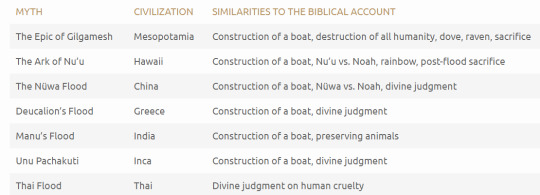
0 notes
Text

During the American Civil War, Virginia resident William Terrill Bradby was one of an estimated 20,000 Native Americans who served with Union military forces in the fight against the Confederacy. A large part of Bradby’s own contributions to the Union cause involved maritime transportation.
A member of the Pamunkey Tribe, Bradby was born in Virginia in 1833. After the Civil War broke out in 1861, Bradby remained loyal to the Union even though Virginia joined the Confederacy. Bradby’s unwavering decision to side with the North resulted in his church expelling him from its congregation. Even more significantly, his military service on behalf of the Union often placed him at high risk and in harm’s way.
Bradby’s initial activities with the Union forces included serving as a land guide and scout for the Army of the Potomac during the Peninsula Campaign in southeastern Virginia in 1862. The following year, however, Bradby exchanged those land-based assignments for “water duty” when he joined the Union Navy.
Throughout the remainder of the war, Bradby served on a variety of military ships and boats and even piloted several of those vessels. For a good part of 1863-64, for example, he was a pilot second class for vessels that were part of a Union flotilla on the James River in Virginia. While serving on the steamship USS Shokokon on that river, Bradby was shot in the leg by a Confederate shell. This injury turned out to be only a flesh wound, but it brought about rheumatism that would plague Bradby for the remainder of his days. Other vessels on which Bradby served were the gunboats USS Onondaga and USS Huron; the tugboat USS Epsilon; the steamship USS Daylight; and the torpedo boat USS Spuyten Duyvil.
There were several other Native Americans from Virginia who likewise served the Union as guides and pilots during the war. They included Bradby’s brother Sterling as well as Thornton Allmond, John Langston, William Sampson, and Powhatan Weisiger. William Terrill Bradby’s own military record, however, is one of the most detailed and best documented of that group.
After the Civil War ended, Bradby returned to where he had lived prior to the conflict: the Pamunkey reservation on the western shore of the Chesapeake Bay in Virginia. Bradby remained there for the rest of his life, becoming one the most respected members of the community. He died sometime around 1905.
🔥 Visit the Native American store here 👇👇
https://nativeamericanblood.com
0 notes
Photo

Map of Colonial Virginia by John Smith in 1612, showing the wigwam belonging to Wahunsonacock (Powhatan)
#17th century#1610s#1612#map#art#john smith#powhatan#powhatan indians#virginia#jamestown#colonial america#british america#13 colonies#wahunsonacock#chesapeake#powhatan confederacy
39 notes
·
View notes
Text
Full offense but...all land in North America IS Native land. Rural settlers aren't exempt just because you think the land we occupy was empty before. Indigenous folks don't necessarily use the land the way settlers conceive of land use. Just because a town wasn't where you house is now doesn't mean it wasn't their land. We COULD be talking about mass-returns of land to Native nations like the case in Oklahoma currently making its way through the Supreme Court but yall don't want to discuss ways we can practically put land BACK in Native hands. Yall don't (or shouldn't) act like all non-citizens are immediately kicked out of the country just because they don't own the land. Do....some of yall not know what the fuck renting is? You realize that even if you buy your house, the government essentially owns it right? You're being intentionally dense because the idea of reparations scares you. It's a bad look.
#colonialism#maybe its poor white of me to say fuck land ownership but yall i fully think that#the tribes of the powhatan confederacy could probably run richmond better than richmond could#land back
12 notes
·
View notes
Photo

[TASK 121: THE POWHATAN CONFEDERACY]
In celebration of November being Native American Heritage Month, here’s a masterlist below compiled of 16 Powhatan faceclaims categorised by gender with their occupation and ethnicity denoted if there was a reliable source. The Powhatan Conederacy refers to numerous tribes from the Virginia, Maryland, New Jersey, and Washington DC area whom once formed a powerful pre-Columbian confederation. If you want an extra challenge use random.org to pick a random number! Of course everything listed below are just suggestions and you can pick whichever face claim or whichever project you desire.
Any questions can be sent here and all tutorials have been linked below the cut for ease of access! REMEMBER to tag your resources with #TASKSWEEKLY and we will reblog them onto the main! This task can be tagged with whatever you want but if you want us to see it please be sure that our tag is the first five tags, @ mention us or send us a messaging linking us to your post!
THE TASK - scroll down for FC’s!
STEP 1: Decide on a FC you wish to create resources for! You can always do more than one but who are you starting with? There are links to masterlists you can use in order to find them and if you want help, just send us a message and we can pick one for you at random!
STEP 2: Pick what you want to create! You can obviously do more than one thing, but what do you want to start off with? Screencaps, RP icons, GIF packs, masterlists, PNG’s, fancasts, alternative FC’s - LITERALLY anything you desire!
STEP 3: Look back on tasks that we have created previously for tutorials on the thing you are creating unless you have whatever it is you are doing mastered - then of course feel free to just get on and do it. :)
STEP 4: Upload and tag with #TASKSWEEKLY! If you didn’t use your own screencaps/images make sure to credit where you got them from as we will not reblog packs which do not credit caps or original gifs from the original maker.
THINGS YOU CAN MAKE FOR THIS TASK - examples are linked!
Stumped for ideas? Maybe make a masterlist or graphic of your favourite faceclaims. A masterlist of names. Plot ideas or screencaps from a music video preformed by an artist. Masterlist of quotes and lyrics that can be used for starters, thread titles or tags. Guides on culture and customs.
Screencaps
RP icons [of all sizes]
Gif Pack [maybe gif icons if you wish]
PNG packs
Manips
Dash Icons
Character Aesthetics
PSD’s
XCF’s
Graphic Templates - can be chara header, promo, border or background PSD’s!
FC Masterlists - underused, with resources, without resources!
FC Help - could be related, family templates, alternatives.
Written Guides.
and whatever else you can think of / make!
MASTERLIST!
F:
Gayle Yiotis (1942) Pamunkey - actress, producer, director, and editor.
Karenne Wood (1960) Monacan - poet, writer, and historian.
Mickie James (1979) Mattaponi, English, Scottish - professional wrestler, singer, actress, and model.
Janelle Olafson (1989) Icelandic, Dutch, English, French, German, Irish, Scots-Irish/Northern Irish, Scottish, Welsh, as well as remote Cornish, Unspecified Powhatan, Swedish, Swiss-French, Filipino - beauty queen and model.
Kiiara (1995) Swedish, German, English, Irish, Scottish, Welsh, remote Nansemond / Irish - singer and songwriter.
Azie Dungey (?) Pamunkey, Mattaponi, African-American, Unspecified White - actress, comedian, and writer.
Monique Mojica (?) Rappahannock, Panamanian [Kuna] - actress, director, and playwright.
Isabelle Kelley (?) Monacan / Unspecified White - WatchCut employee and producer.
Kianga (?) Haliwa-Saponi, Nansemond, Tuscarora, Mi'kmaq - artist, blogger and Instagrammer (mskianga).
Phoebe Farris / Phoebe Farris-Dufrene (?) Pamunkey - author, photographer, artist, curator, editor, academic, and art therapist.
M:
Wayne Newton / Carson Wayne Newton (1942) 1/4 Patawomeck, 1/4 Cherokee, 1/4 Irish, 1/4 German - actor, singer, guitarist, pianist, and percussionist.
Ned Luke (1958) English, German, Scots-Irish/Northern Irish, Scottish, Welsh, Breton, French, Guernsey Channel Islander, Irish, Italian (Venetian), Nansemond, Unspecified Powhatan - actor.
Mike McCready (1966) Finnish, German, Dutch, English, Scots-Irish/Northern Irish, Scottish, Welsh, 1/16th Norwegian, as well as remote Cornish, French, and Unspecified Powhatan - musician.
Yelawolf (1979) English, Irish, Scots-Irish/Northern Irish, Scottish, Welsh, Cherokee, Unspecified Powhatan - recording artist.
Gregório Duvivier (1986) Tupi, Tupiniquim, Brazilian [Portuguese (including Azorean and Madeiran), possibly other], Belgian (Flemish, Walloon), English, French, German, Hungarian, Scottish, as well as distant Dutch, Italian, Unspecified Powhatan, Spanish (Andalusian, Castilian, Extremaduran), and Welsh - actor, comedian and poet.
Dylan Jagger Lee (1997) Greek, Finnish, English, Russian, Irish, French, possibly Nansemond - model.
Problematic:
Megan Fox (1986) English, as well as small amounts of Scottish, German, Scots-Irish/Northern Irish, distant French and Welsh, 1/256th Unspecified Powhatan - actress and model - “I think that I’m so psychotic and so mentally ill that if I could tap into that I could do something really interesting.”, “I would never date a girl who was bisexual, because that means they also sleep with men, and men are so dirty that I’d never want to sleep with a girl who had slept with a man”, and regarding Michael Bay (who was raised Jewish) "He wants to be like Hitler on his sets, and he is.”
Tommy Lee (1962) English, some Irish and French / Greek, possibly Nansemond - musician and founding member of Mötley Crüe - domestic abuse.
17 notes
·
View notes